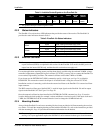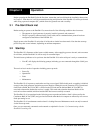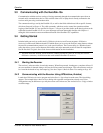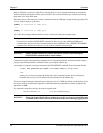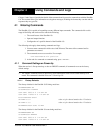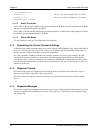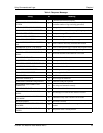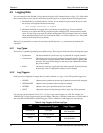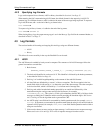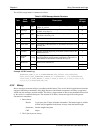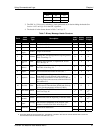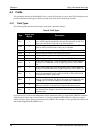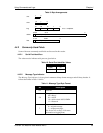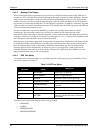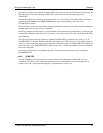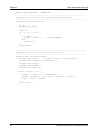
Using Commands and Logs Chapter 4
EuroPak-15a Receiver User Manual Rev 5 35
4.2.3 Specifying Log Formats
Logs can be requested in two formats, ASCII or Binary, described in Section 4.3 on Page 35.
When entering the LOG command using ASCII format, the default format for the output log is ASCII. To
generate logs in a different format, a suffix is added to the name of the message being requested. To request a
log in ASCII format, add A to the end of the log as shown below.
LOG ALMANACA
To request a log in Binary format, B is added to the end of the log name.
LOG RANGEB ONTIME 30
When issuing Binary logs, the output message type is set in the Message Type field in the command header, as
described in Table 7 on Page 37.
4.3 Log Formats
The receiver handles all incoming and outgoing NovAtel logs using two different formats:
•ASCII
•Binary
This allows for some versatility in the way the EuroPak-15a can be used.
4.3.1 ASCII
The ASCII format is readable by both you and a computer. The structures of all ASCII messages follow the
general conventions as noted here:
1. Basic format:
2. The lead code identifier for each record is '#'. This identifier is followed by the header parameters,
as described in Table 6 on Page 36.
3. Each log is of variable length depending on the amount of data and field formats.
4. All data fields are delimited by a comma ',' with two exceptions. The first exception is the last
header field which is followed by a ';' to denote the start of the data message. The other exception
is the last data field, which is followed by a '*' to indicate end of message data.
5. Each log ends with a hexadecimal number preceded by an asterisk and followed by a line
termination using the carriage return and line feed characters, for example,
*1234ABCD[CR][LF]. This value is a 32-bit cyclic redundancy check (CRC) of all bytes in the
message, excluding the '#' identifier and the asterisk preceding the checksum digits. See Section
4.4.2.5 on Page 41 for the algorithm used to generate the CRC.
6. An ASCII string is one field and is surrounded by double quotation marks, for example, “ASCII
string”. If separators are surrounded by quotation marks then the string is still one field and the
separator will be ignored, for example, “xxx,xxx” is one field. Double quotation marks within a
string are not allowed.
7. If the receiver detects an error parsing an input message, it will return an error response message.
Please see Section 4.1.4 on Page 32 for a list of response messages from the receiver.
#HEADER_PARAMS;PARAM_1,PARAM_2, ...,PARAM_N* XXXXXXXX [CR][LF]



